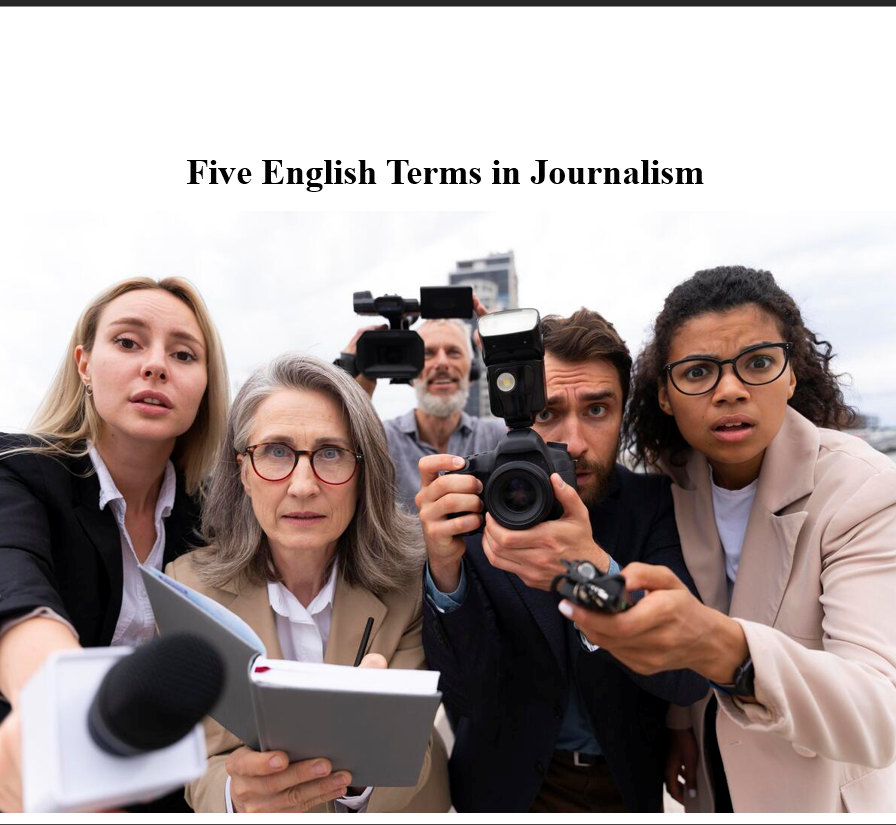Five English Terms in Journalism

In journalism, using the
right terminology is crucial for conveying information clearly and accurately.
Here are five commonly used terms in journalism, along with their explanations:
1. Lead
- Explanation: The lead is the opening
sentence of a news article designed to grab the reader's attention. It
typically includes the most important information and answers basic questions
like who, what, where, when, why, and how.
- Example: "A prominent environmental
activist was arrested during a peaceful protest in Jakarta yesterday."
2. Byline
- Explanation: A byline is a line that
attributes the article to its author, usually placed beneath the title. It
gives credit to the journalist and often includes their affiliation, such as
the name of the media outlet.
- Example: "By: Jane Doe, Senior
Editor."
3. Quote
- Explanation: In journalism, a quote refers
to a statement taken directly from a source or interviewee. Using quotes adds
perspective and authenticity to a news story.
- Example: "In the interview, she
stated, 'We must fight for our environment.'"
4. Inverted Pyramid
- Explanation: The inverted pyramid is a
writing structure that presents the most important information at the top,
followed by details of lesser importance. This technique helps readers quickly
grasp the essence of the news.
- Example: An article begins with crucial
information about an event, followed by context and additional details.
5. Fact-checking
- Explanation: Fact-checking is the process
of verifying the truthfulness of information before publication. It is
essential for ensuring the accuracy of news and maintaining public trust in the
media.
- Example: Before publishing an article,
journalists conduct fact-checking to ensure that all presented data is
accurate.
Conclusion
Understanding these
terms is essential for students of English Literature who aspire to pursue a
career in journalism. Mastery of language and knowledge of good journalistic
practices will help create informative and engaging written works. Let’s
continue to explore the world of journalism and enhance our skills in
delivering quality news!